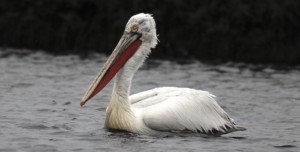Changes to the British List (28 Sep 2018)

Dalmatian Pelican Pelecanus crispus Trevorian Pool, Cornwall, May 2016 © Penwith Nature
The British Ornithologists’ Union Records Committee (BOURC) has added the following species to the British List:
Dalmatian Pelican Pelecanus crispus
Third-calendar-year or older, near Land’s End and roaming, then Drift Reservoir and other sites, Cornwall, 7 May to 20 November 2016 (photographed).
The appearance of this individual in southwest England and its extensive stay resulted in much debate about its origin. From plumage details it was realised that the same bird had passed through Poland, Germany and France, before arriving in England. In Poland and France the record has been accepted to Category A of their respective national lists, although in Germany it has been placed in Category D.
As a first for Britain BOURC had to decide whether this bird derived from wild populations in the eastern Mediterranean, or from captive collections. Mediterranean populations are recovering with increases in numbers, and birds are known to wander away from breeding areas; conversely the species is widely kept in captivity with a number of known escapes found in Western Europe.
It is of note that the remains of Dalmatian Pelicans have been found in the Bronze Age and Iron Age fossil record from the English fens (The History of British Birds, Yalden & Albarella 2009).
After careful consideration BOURC decided that in the balance of probabilities this record likely was of wild origin.
Dalmatian Pelican breeds from south-east Europe to China, with birds moving small distances to winter from Greece to south China.
Further details will be published as part of the BOURC’s 50th report due to be published in Ibis in October 2019.
The British List now stands at 618 species (Category A = 600; Category B = 8; Category C = 10).
View the British List, sponsored by Leica

